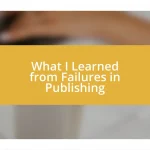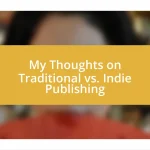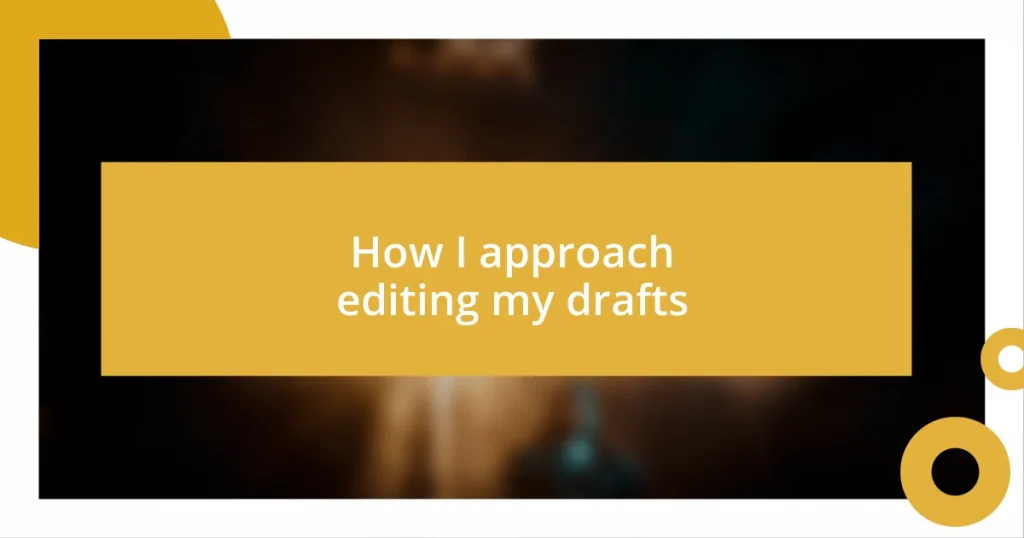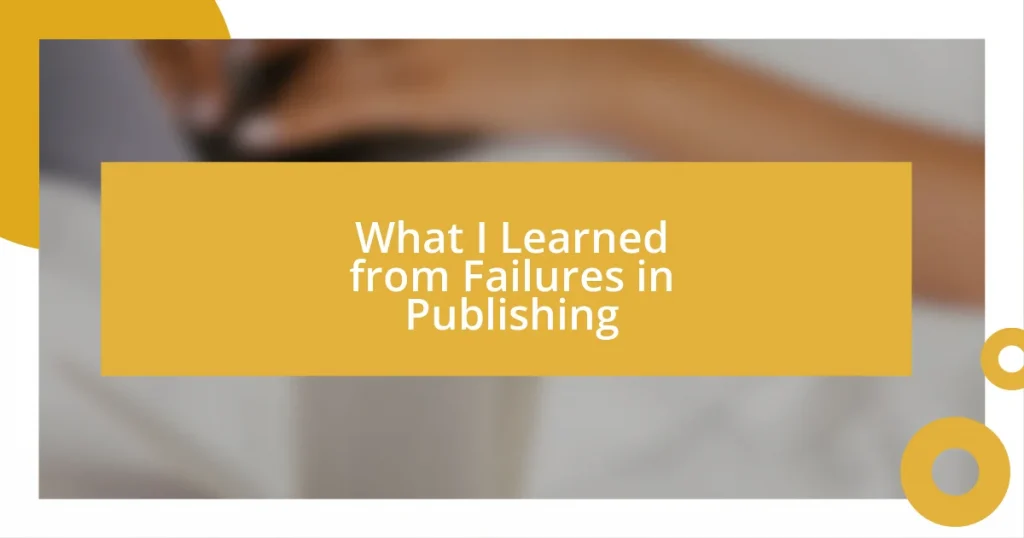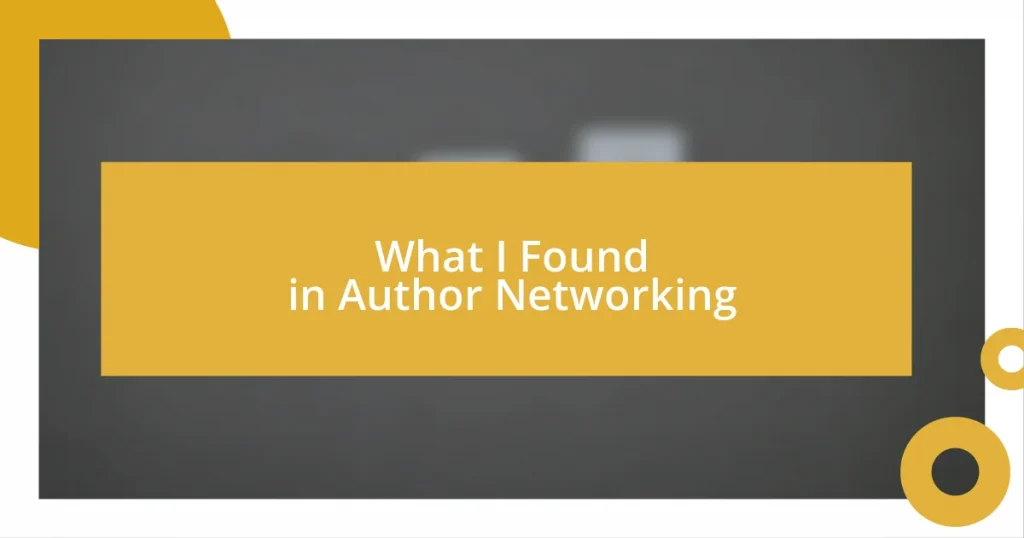Key takeaways:
- Editing is viewed as a growth opportunity, transforming anxiety into excitement and engaging with each sentence to enhance clarity and connection with the reader.
- Setting clear editing goals—such as clarity, conciseness, consistency, engagement, and accuracy—helps maintain focus and purpose throughout the editing process.
- Incorporating feedback thoughtfully and maintaining a consistent style while bravely finalizing the draft ensures that the writing is polished, effective, and resonates with the intended audience.
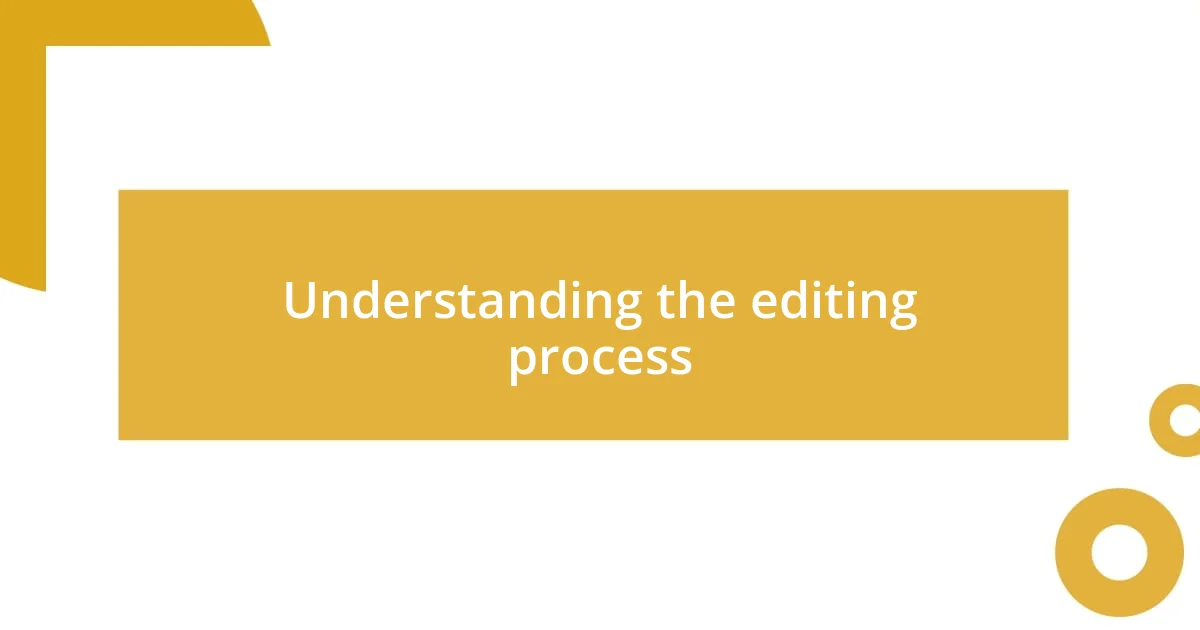
Understanding the editing process
Editing is often seen as a daunting task, but I see it as an opportunity for growth. When I dive into my drafts, I engage with each sentence, asking myself if it truly conveys my message. Have you ever felt the relief of clarity when a piece finally falls into place?
As I edit, I remember the countless times I struggled to express a thought clearly, wishing someone had patiently guided me. That’s why I aim to be my own mentor during this process, treating each edit like a conversation with an imaginary reader. It transforms my anxiety into excitement, turning my draft into something I’m proud to share.
Sometimes, I even print my drafts to physically mark them up. There’s something cathartic about crossing out words and scribbling notes in the margins. Have you ever felt the thrill of visually seeing your thoughts come to life like that? It’s a moment where I feel connected to my work—it’s a process of revelation, not just correction.
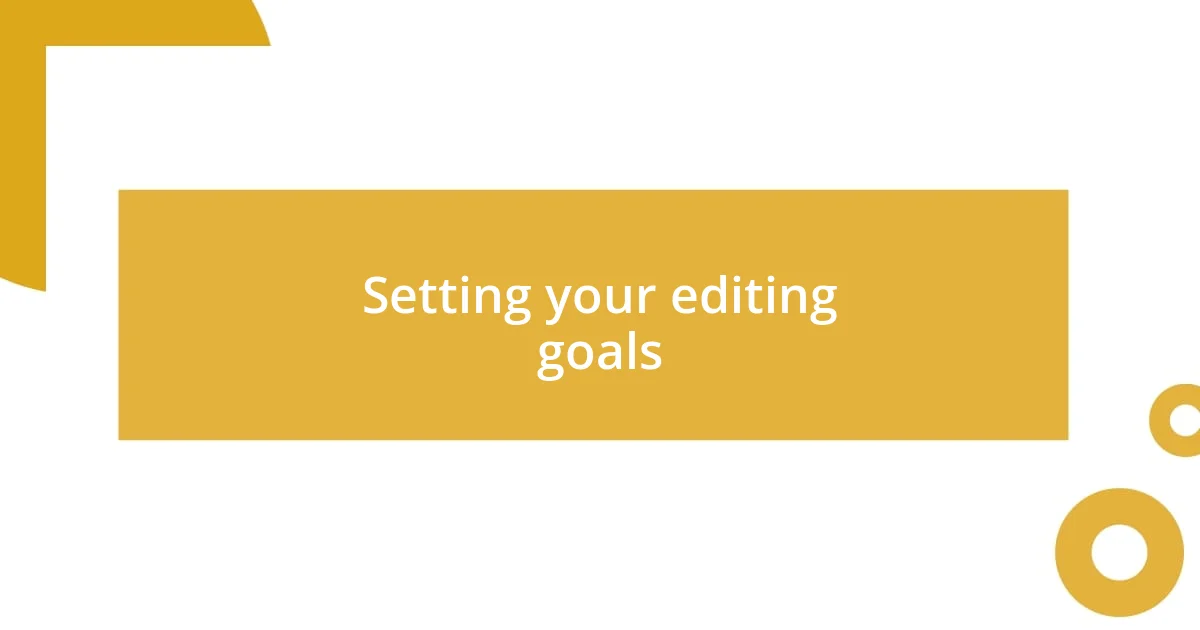
Setting your editing goals
Setting clear editing goals can transform the editing phase from a mere chore into a purposeful journey. Personally, I like to identify what I want to achieve with each round of edits. Whether it’s enhancing clarity, tightening prose, or refining my tone, having specific goals keeps me focused. I’ve found that when I approach my drafts with clear intentions, I feel more empowered and less overwhelmed.
Here are some effective editing goals to consider:
- Clarity: Ensure each sentence clearly conveys its intended message.
- Conciseness: Remove unnecessary words or phrases that clutter the text.
- Consistency: Maintain a uniform tone, style, and structure throughout the piece.
- Engagement: Identify areas to evoke emotions or stimulate interest in the reader.
- Accuracy: Double-check facts, grammar, and punctuation for any errors.
Sometimes I take a moment to visualize the reader’s experience. I want them to feel engaged and intrigued, much like how I get drawn into a good book. Keeping this in mind makes my editing process feel less like a task and more like an art form, where each goal aligns with creating an impactful final piece.
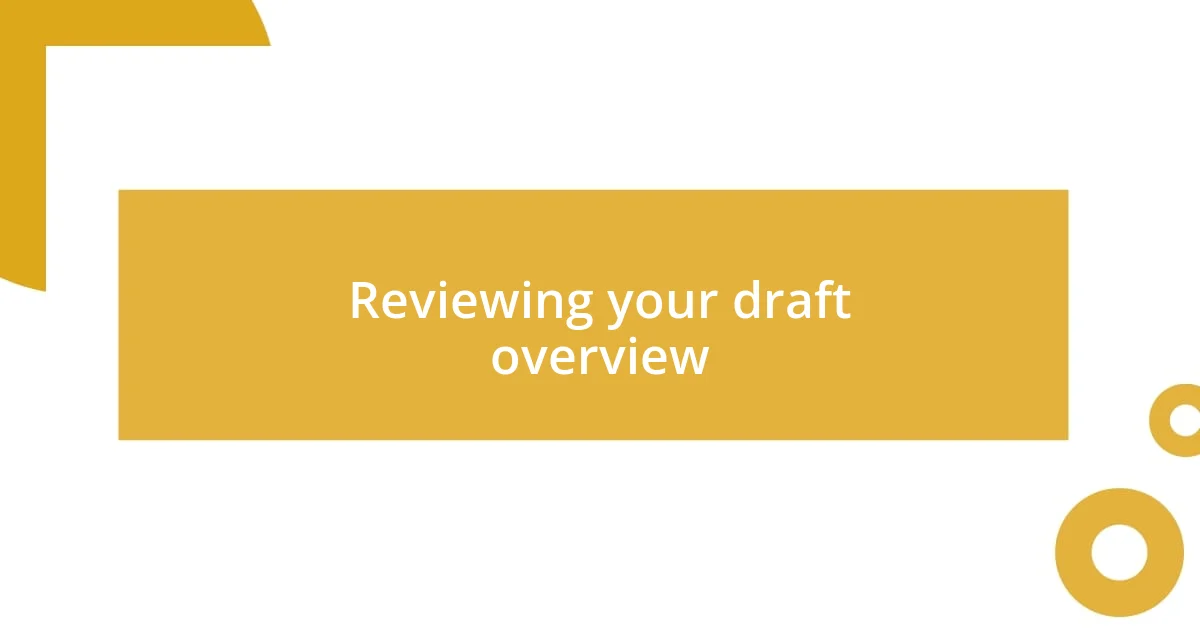
Reviewing your draft overview
When I sit down to review my draft, I often think about the journey each piece has taken to arrive at this stage. It’s fascinating to trace how my initial ideas evolved into a tangible form. I usually start by reading the draft from beginning to end, almost like a reader would. This gives me a fresh perspective and helps me identify areas that may need clarification or additional detail. Have you ever noticed how stepping back can illuminate parts of your writing that might need more attention?
As I read through, I make notes directly on the draft. It’s like having a conversation with my past self. If something doesn’t resonate or seems off, I jot down my thoughts in the margins—this process kind of feels like having a supportive buddy by my side, guiding me through my own work. I remember one instance where a simple comment to myself led to a complete reorganization of my ideas, making everything flow so much smoother. It’s truly rewarding how a little introspection can lead to significant improvements.
Lastly, I find that taking breaks between review sessions is crucial. I allow myself to step away for a bit, only to return with a clearer mind. This distance often reveals elements I’d missed before, much like when you leave your work and come back with fresh eyes. Have you experienced that surge of insight after a little time away? It’s these small strategies that turn the daunting editing process into an engaging and enlightening experience.
| Review Technique | Description |
|---|---|
| Initial Read-Through | Read the draft in full to understand the overall flow and identify major issues. |
| Margin Notes | Make comments and notes in the margins to document thoughts and areas for improvement. |
| Take Breaks | Step away for a short while to return with a fresh perspective, enhancing clarity and insight. |
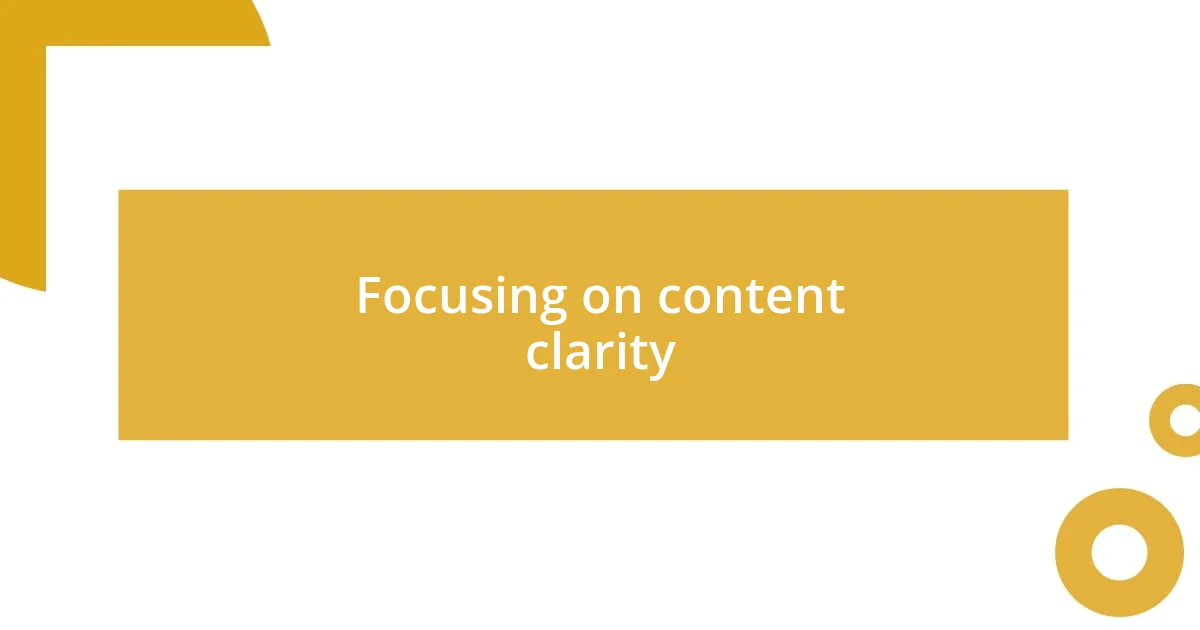
Focusing on content clarity
Focusing on content clarity is crucial for effective communication. When I edit, I consciously ask myself: Does each sentence do its job? I strive to eliminate any ambiguity, especially in complex sections. I remember a time when I was editing an article on a technical subject; my initial draft was filled with jargon that I had thought was clear. After revisiting it with a fresh perspective, I realized that some terms would leave readers confused rather than informed. Simplifying my language made all the difference, transforming a dense passage into something accessible.
One effective strategy I’ve adopted involves reading my work aloud. This technique not only unveils awkward phrasing but also helps me hear where the rhythm falters. I once edited a narrative piece that, when spoken, felt flat. It was through this practice that I discovered certain sections didn’t flow logically, making me rethink whole paragraphs. Engaging with the text in an auditory way revitalized my understanding and allowed me to make adjustments that enhanced clarity. Have you ever tried reading your drafts aloud? If not, it might be worth exploring!
In my experience, clarity isn’t just about making the text understandable; it’s about creating a connection with the reader. I often visualize a reader on the other end—someone looking for insights that resonate with their own experiences. This emotional awareness encourages me to remove any vague references or convoluted sentences. I want my writing to feel like a conversation, not a riddle. Reflecting on this while editing has led to more precise language and a stronger bond with my audience.
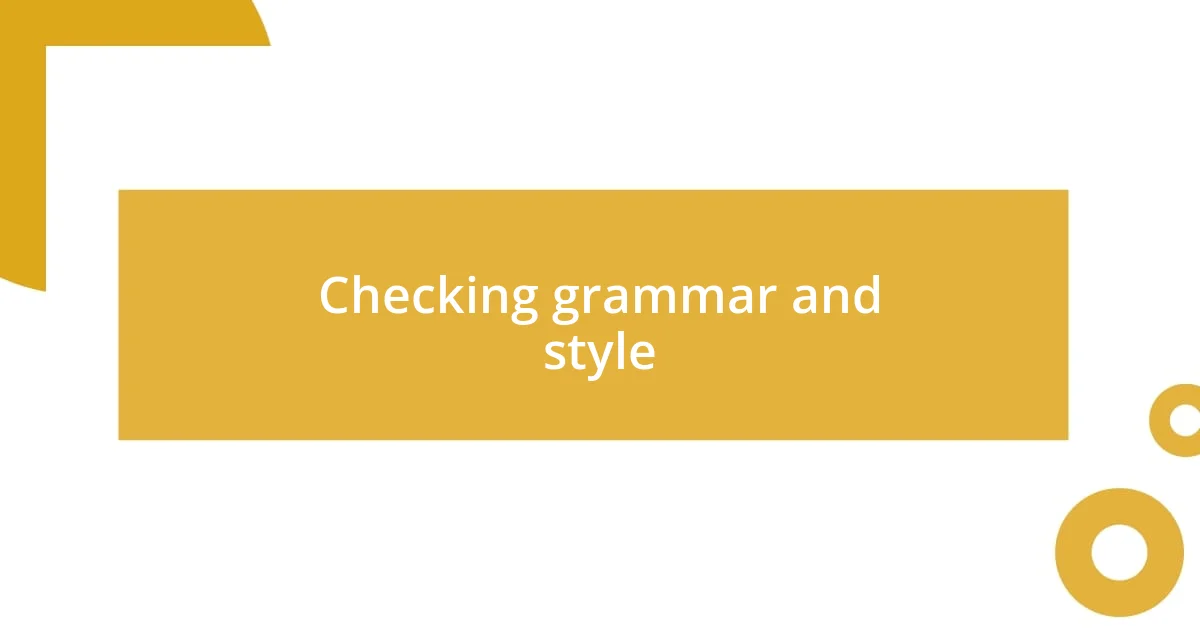
Checking grammar and style
When it comes to checking grammar and style, I find that it’s more than just about correcting mistakes; it’s about refining my voice. I often use grammar-checking tools, but I approach them with caution. They can be helpful, but I sometimes feel they miss the nuances of my writing style. For instance, I once relied on one too heavily and ended up changing my sentences in a way that just didn’t feel like me. It was a valuable lesson in trusting my intuition alongside technology.
As I dive deeper into editing, I can’t stress enough the importance of style consistency. There’s something comforting about a coherent voice running through my work. I remember editing a blog post where I inadvertently switched from a formal tone to a casual one halfway through. Once I spotted it, I had to laugh at myself, realizing how jarring that shift could be for the reader. It really drove home the idea that maintaining a consistent style is crucial for keeping the reader engaged and ensuring that my message gets across effectively.
I also take a bit of time to reflect on sentence structure. I play around with varying lengths to create a rhythm that feels engaging. Sometimes, I find that breaking up a long, complex sentence into shorter, impactful ones truly elevates the piece. In one of my earlier drafts, I had a sentence that was almost a hundred words long! When I finally broke it down, I noticed how much clearer my ideas became. Have you ever tried reshaping your sentences to experiment with flow? It’s a simple technique, but it can dramatically enhance the readability of your work.
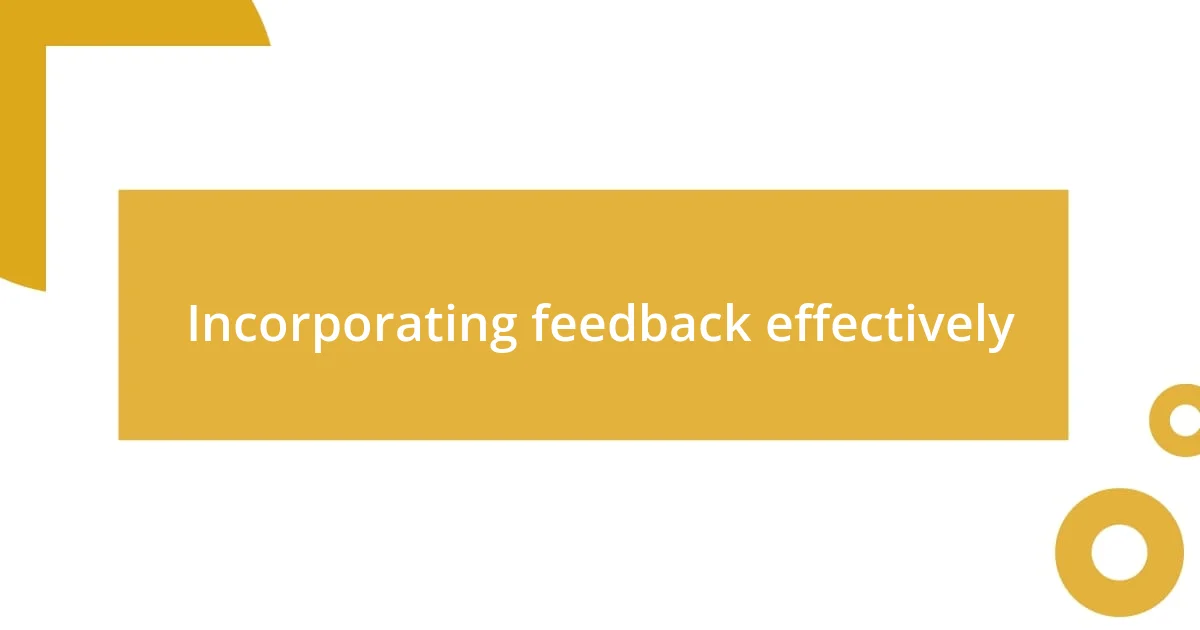
Incorporating feedback effectively
When incorporating feedback effectively, I make it a point to approach suggestions with an open mind. Often, the first instinct is to defend my choices, but I’ve learned that listening can lead to valuable insights. I remember a time when a colleague critiqued my use of an analogy in a presentation; at first, I was hesitant, but after reflecting on their perspective, I realized it indeed wasn’t as relatable as I had thought. Embracing feedback often means recognizing that others might see angles I’ve overlooked.
I also find it extremely helpful to prioritize feedback based on the source. For instance, I once received conflicting opinions from an editor and a peer. After careful consideration, I decided to lean more towards the editor’s insights. It was a practical choice because their experience aligned with the audience I was aiming to reach. I’ve come to appreciate that not all feedback carries equal weight, and knowing who to listen to can guide me effectively in refining my work.
Moreover, I like to keep a feedback log, where I jot down key points from different reviews. This practice not only keeps me organized but allows me to identify recurring themes. On one occasion, I noticed that multiple people pointed out my tendency to over-explain concepts. This realization prompted me to streamline my writing significantly, resulting in a much clearer final draft. Do you track your feedback? By turning comments into actionable items, the editing process becomes less daunting and more productive.
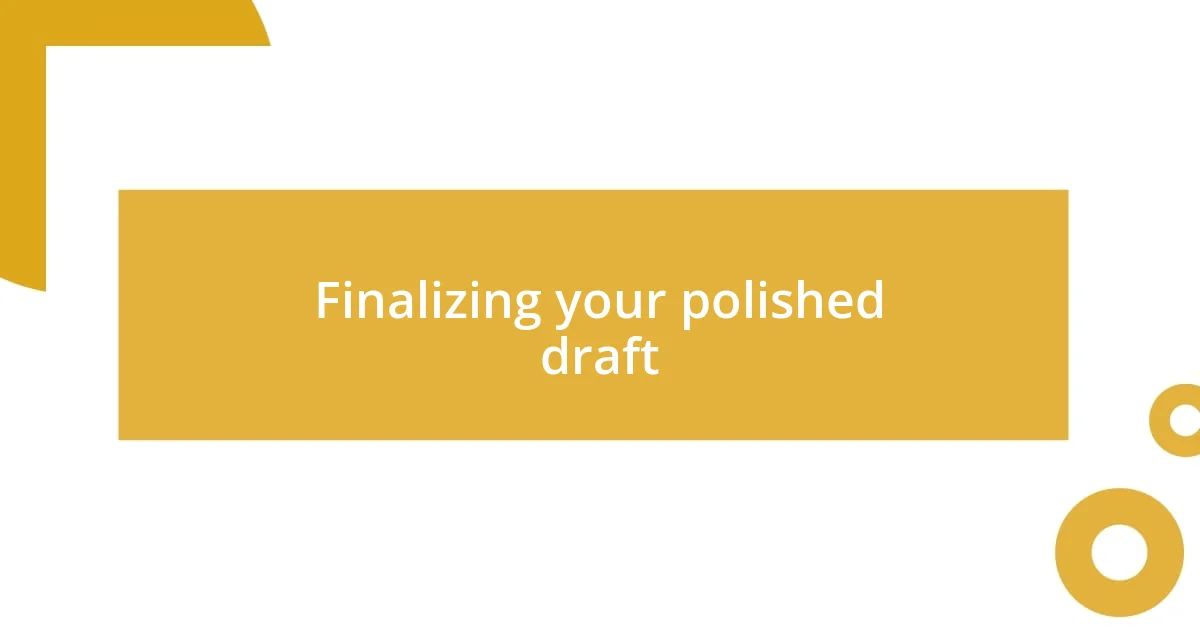
Finalizing your polished draft
As I finalize my polished draft, I make it a point to read my work aloud. There’s something magical about hearing my words spoken back to me. I recall an instance when I stumbled over certain phrases that I thought flowed well on the page. It turned out that listening highlighted awkward transitions I hadn’t noticed before. Have you ever tried this method? It often uncovers nuances that aren’t as apparent in silent reading.
Another step I take is to revisit my objectives. I always ask myself: Does this draft achieve what I set out to do? I once wrote an article that felt great but strayed from my original intent, leaving me frustrated and my readers confused. When I meticulously aligned each section with my goals, it transformed the piece into something focused and impactful. This reflection is crucial; it’s like putting a compass to my writing journey, ensuring I’m on the right path.
Lastly, I dedicate a moment for a final proofread with fresh eyes. Taking a break before this last step prevents me from overlooking simple mistakes. I vividly remember a time when I noticed a minor typo in the title after publishing. It felt like seeing a stain on my favorite shirt! That moment underscored the value of stepping away and returning with clarity. What about you? How do you ensure your final draft shines without glaring errors? Your attention to detail can make a world of difference.
